Harold Sidney Freeman
Private 11324 Harold Sidney Freeman, 6th (Service) Battalion, Royal Berkshire Regiment.
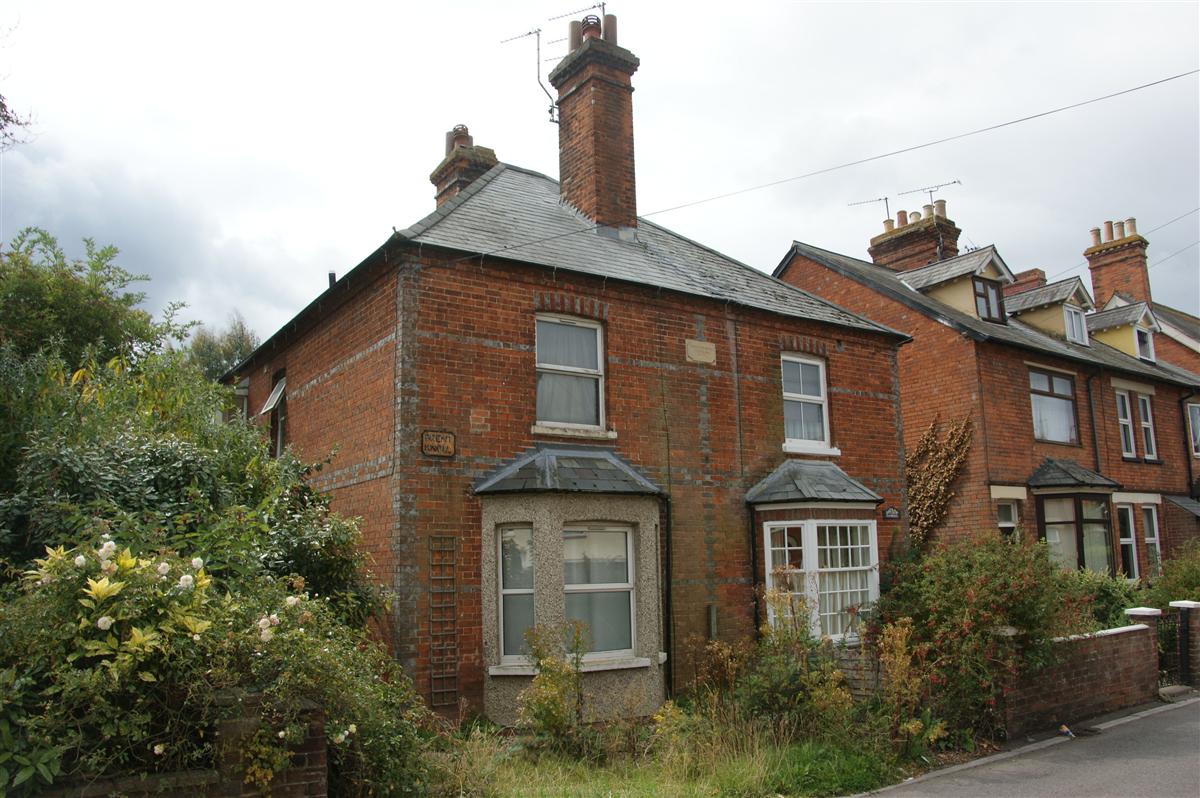
77 Queen's Road, the family home. Next door at No 75 was Reuben's brother William and his family. (Google Streetview) |
Harold was born in 1890, the son of Reuben and Pamela Freeman née Biggins. Unusually for the time Reuben owned his home - and his brother William owned the adjoining cottage. Pamela came originally from Brent Knoll in Somerset, which explains the naming of the cottages (originally 1 and 2 Brent Knoll Cottages. Reuben and Pamela went a step further and named their cottage Brent Knoll - it is now simply 77 Queen's Road.
Harold was their third child following his sister Mabel (born 1885) and brother Stanley James (1887). They were all to be motherless in 1892 when Pamela died, aged only 41. Just over a year later Reuben remarried, to Annie Clark, who became mother to the children.
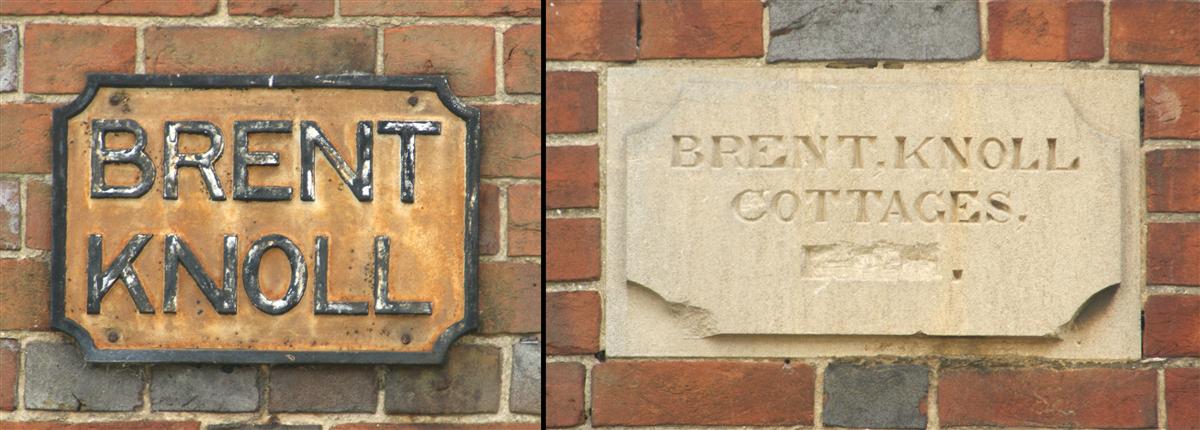
The name of the two cottages (right) and of Reuben and Pamela's home (left) |
After school Harold was lucky enough to get an apprenticeship at Plenty’s, where he followed his father’s trade as a pattern maker. When he completed his apprenticeship he continued at Plenty’s as a fully qualified pattern maker. Outside of work his passion was football, in particular Greenham Football Club where he became involved as a player and as a member of the committee.
When the war began on 4 August 1914 it did not take Harold long to decide to ‘do his bit’; he enlisted into the Royal Berkshire Regiment on 31 August and was posted a few days later to their newly formed 6th (Service) Battalion at Shorncliffe in Kent. Shorncliffe was a long established military camp, an ideal location to bring a new unit together; once the battalion was established, it soon moved on to Colchester for training. In May 1915 the battalion moved again, to Codford St Mary on the edge of Salisbury Plain. In July the men were informed that they would soon be moving to France and were given four days embarkation leave. For many this would be the last time they saw their families.
The battalion was not sent out alone; an entire Division (the 18th) went out from Codford and assembled near Flesselles, north of Amiens. They set off on 24 July, the move taking five days in all; Harold landed in France on 25 July. The 6th Royal Berks was one of four infantry battalions in the 53rd Brigade along with the 8th Norfolks, the 8th Suffolks and the 10th Essex. Together with two more brigades (54th and 55th) they made up the front line troops of the 18th Division.
For almost a year they were spared any involvement in a major action, but they were a front line unit and took their turn in the trenches, which resulted inevitably in some casualties. Harold wrote home about his experiences:
Newbury Weekly News, 16 March 1916 – Local War Notes
Pte H S Freeman, of the 6th Berks, writing to his father, Mr Reuben Freeman, of Queen’s-road, Newbury, gives an interesting description of recent experiences, remarking that the Germans seemed to have got the “rats,” having probably heard of Russian successes. They had sent over some shells, some of them falling particularly close. One dropped clean through the roof of a house, but luckily all the men were out, or probably it would have been the same fate as befell Sergt-Major Lawrence. Poor Will Povey had been shot through the head by a sniper, with an explosive bullet. He was one of the best and would be much missed. The writer was in cheerful mood, and suggests that anything in the way of eatables would be welcome by hungry soldiers “Somewhere in France.”
In a second letter, Pte Freeman said the battalion was back on rest, bulleted in barns. It had been snowing very thickly, eighteen inches, and then a thaw, causing a terrible mess. While they were in the trenches they had the biggest bombardment yet experienced, but they had the last word. Next day another snowstorm, and terribly wet and cold feet. Then a second bombardment, but the enemy found a hot reception. A flare disclosed Germans leaving their trenches, and twenty British machine guns started arguing with them, so that not one reached the trenches. Then the artillery took a turn, and the Germans were not able to fetch their wounded. It was not likely that they would try their games again.
Will Povey was a workmate of Harold’s before the war at Plenty’s, shot by a sniper on 5 February 1916. The Sergeant-Major Lawrence referred to is Walter Lawrence, a well known Newburian, who died on 8 February while serving with the 1/4th Battalion, Royal Berkshire Regiment – Harold may well have learned of his fate from the local paper, the Newbury Weekly News, which was a popular read for local lads at the front.
Harold wrote again, demonstrating that the lads in the trenches were keeping up with the news of the war on other fronts:
Newbury Weekly News, 6 April 1916 – Local War Notes
Pte Harold Freeman, of the 6th Berks, son of Mr and Mrs R Freeman, Queen’s-road, in a recent letter said they had summer heat one day, snow and frost the next. There certainly seemed no cause for complaint as regarded the outlook around the war areas. Poor old Billy [‘Kaiser Bill’] was getting a nasty knock in the face at Verdun, and neither the Austrians nor Turks appeared to be doing much. He considered that a good job to give non-combatants would be to re-build the devastated villages, which they could manage without any killing. In the fighting line they would rather have their room than their company. In front of their lines was a dozen dead Germans, strung up on the barbed wires. They tried to sneak across in the darkness, but they caught the Tartars that time. The enemy retaliated by heavy cannonading, but only slightly wounded two men, although they smashed the trenches considerably. The damage was now repaired, and the trenches stronger than ever. Great sport with the mice, nothing unusual to catch two at a time.
When the weather improved life was a little easier, even more so when the Division was withdrawn from the line for a while:
Newbury Weekly News, 1 June 1916 – Local War Notes
Pte Harold Freeman, son of Mr and Mrs Reuben Freeman, Queen’s-road, who is in a Berkshire Battalion somewhere, writes that after a long term in the trenches they are having a rest three days’ march away. Enjoying a really good time, splendid weather, and once again it is Saturday-night soldiers, with polished buttons, brushed clothes and shiny boots. Up in the line they didn’t think anything about such things, eighteen days in the trench, six out, nobody troubled much about personal appearance. At the time of writing they were being inspected and had to look smart. The writer says he is as brown as a berry and in the pick of condition.
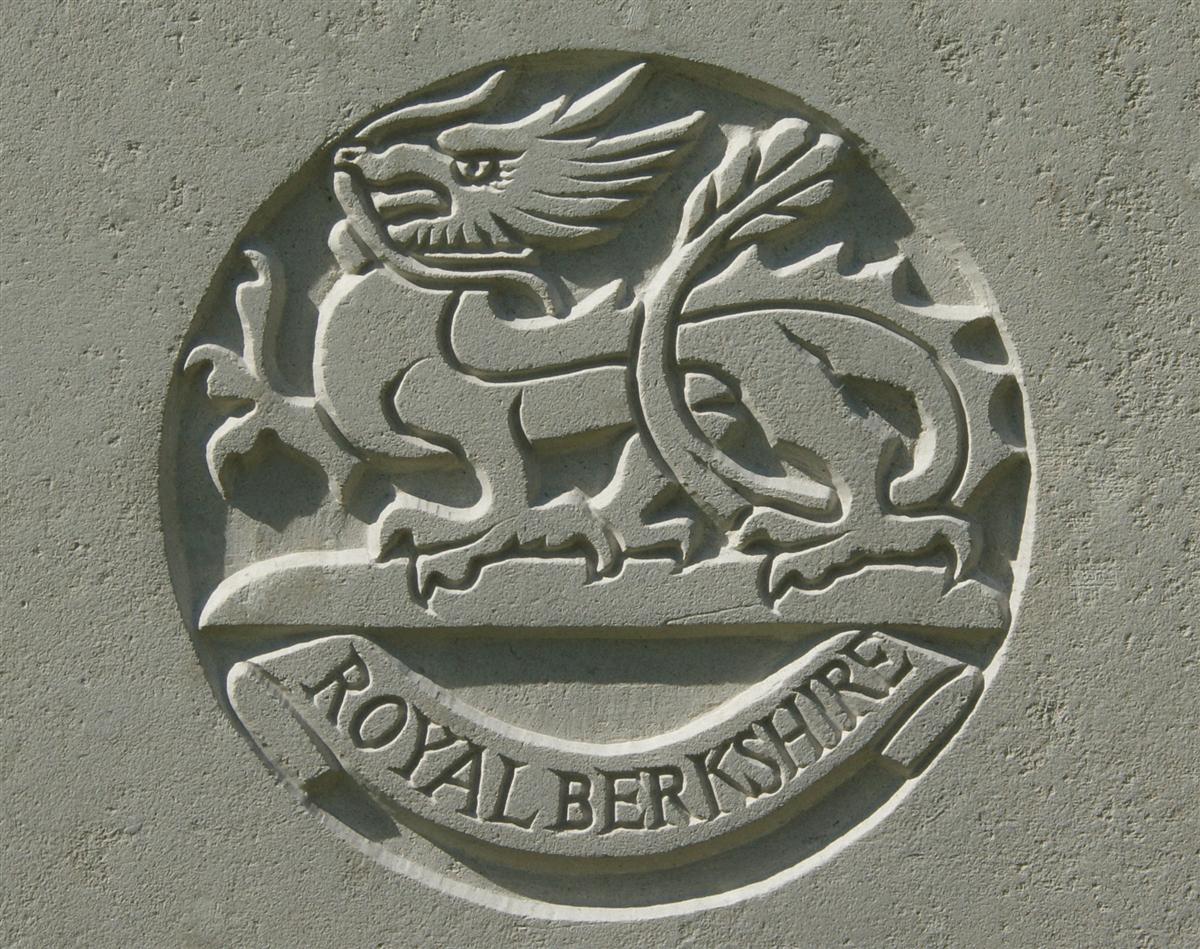
The regimental badge of the Berkshire Regiment, as used on CWGC headstones. |
Newbury Weekly News, 13 July 1916 – Local War Notes
Pte Harold Freeman, son of Mr and Mrs Reuben Freeman, who was wounded in recent fighting, has been sent to England, “dear old Blighty”, as he calls it, and at the time of writing was on his way to hospital. He was going on all right, and being treated with great kindness everywhere.
Harold was wounded on 1 July 1916, the infamous first day of the Battle of the Somme. This day has gone down in history as one of unmitigated disaster for the British Army; 60,000 casualties in a single day. However, it was not all disaster; at the southern end of the offensive the British XIII Corps and the 7th Division from XV Corps went over the top and achieved most of their objectives, advancing in places as far as 3km. As they emerged at the rear of the German defences they could see the enemy retreating to the north. The 6th Battalion, Royal Berkshire Regiment were in the thick of this action, taking heavy casualties but achieving much. Harold was hit when he and his comrades were in the German third line – well beyond their front line.
More news came the following week:
Newbury Weekly News, 20 July 1916 – Local War Notes
Private Harold Freeman, son of Mr and Mrs Reuben Freeman of Queen’s-road, has been severely wounded whilst serving with one of the Berks Battalions at the Front. He had carried through to the third line trench, and had just finished sending a message, when he was hit in the shoulder. He was shot through the lung, and another bullet grazed his side. He was brought to England, and is now in hospital, where his condition is satisfactory, although it is sufficiently critical to cause anxiety.
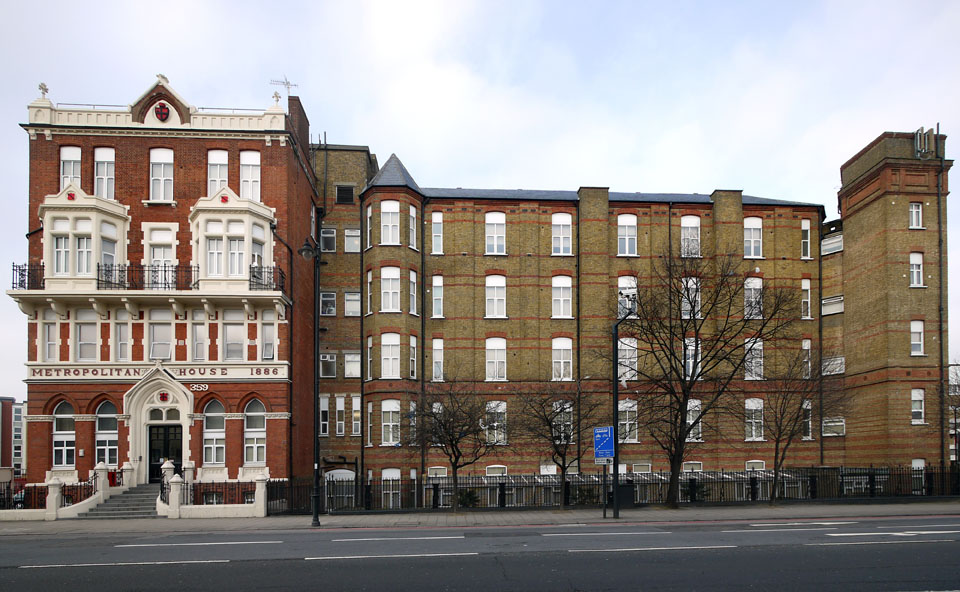
The former Metropolitan Hospital, Hackney (Alan Denney) |
He was sent to the Metropolitan Hospital in Kingsland Road, Hackney, London. His condition steadily worsened, the medical staff seemingly helpless - for some reason his weakened condition meant that he could not be 'treated' with X-rays?
On 6 September the end came, a week later the sad news was communicated to the readers of the local paper in an announcement in the Family Notices column:
Newbury Weekly News, 14 September 1916 – Died of Wounds
FREEMAN – Sept 6, 1916, at the Metropolitan Hospital, London, from wounds received in France on July 1st, 1916, Harold Sidney, the dearly loved son of Mr and Mrs R Freeman, of Brent Knoll, Queen’s-road, Newbury, aged 26 years.
An article in the same edition of the paper reported on Harold’s funeral and told the story of his short life:
Newbury Weekly News, 14 September 1916 – A Newbury Soldier
WOUNDED IN ACTION – DEATH IN LONDON HOSPITAL
Another name has to be added to the lengthening list of Newbury men who have honourable given their lives in the service of their country. The sad news was received on Wednesday of the death of Private Harold Sidney Freeman, second son of Mr Reuben Freeman, of Brent Knoll, Queen’s-road. The father is one of the best known and respected of Newbury men, and his son, being of a bright and cheerful disposition, had made many friends who deplored his untimely death. Harold Freeman was educated at the Boys’ British School, and had passed through his apprenticeship as a pattern maker at the Eagle Iron works. He was a member of the committee of the Greenham Football Club and keenly interested in the game. Directly war broke out he considered it his duty to offer his services, and in August, 1914, enlisted in the Royal Berks Regiment. He was trained at Shorncliffe, Colchester and Codford, and in July, 1915, was with his battalion in the battle zone. It was on the first day of the bug push that he was wounded. He was acting as a signaller, and had been forward on duty. He returned and reported to his Captain, who remarked “You have done jolly well my boy; get back in that trench slippy or they will have you.” Freeman was just dropping into cover when an expanding machine gun bullet struck him in the shoulder, piercing his lung. He was brought to England and treated in the Metropolitan Military Hospital at Kingsland-road, where he received the most skilful surgical treatment and devoted nursing. For five weeks he progresses satisfactorily, and his relatives, who frequently visited him, were hopeful. Owing to great physical weakness caused by loss of blood, it was not possible for the doctors to make examination by the X-rays, and it was feared that some portion of the missile was still lodged in his lungs. Haemorrhage set in, and recurring attacks resulted in increasing weakness. He was quite cheerful up to the end, and was the general favourite of the ward, doctors and nurses and patients being quite devoted to him. The end came on Wednesday morning. By special request of the medical staff and consent of the parents, a post mortem examination was conducted, and it revealed the fact that there was no foreign substance in the body, but that the bullet had smashed a rib, which penetrated the lung. The examination is likely to prove very helpful in the treatment of similar cases, and the parents had the satisfaction of knowing that their soldier sin had bravely ‘done his bit,’ both in life and afterwards.
THE FUNERAL
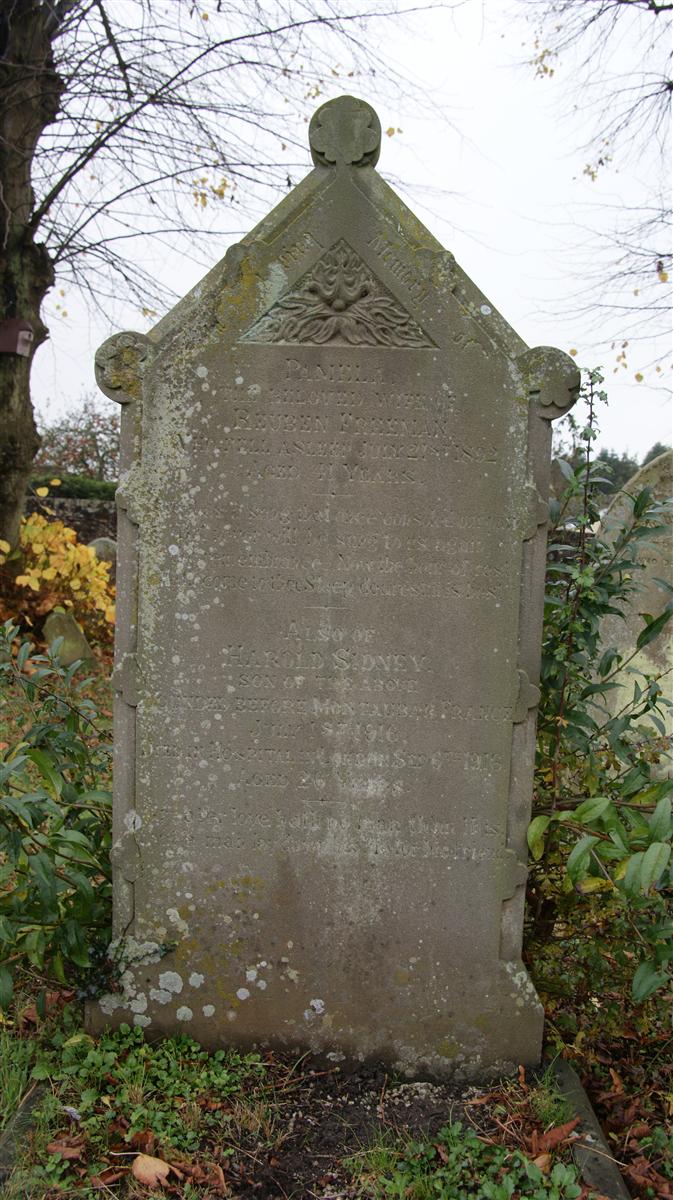
The family headstone commemorating Harold and his mother, Pamela.. |
HAROLD SIDNEY FREEMAN
Private, 6th Royal Berkshire Regiment
Died September 6th, 1916
Aged 26 years.
A large number of floral tokens were sent, including those from Father, Mother and Mabel; Stan and Alice; Auntie Tit; Elsie and Ebe; Ern and Nellie; Mr and Mrs Frank Freeman; Mr and Mrs E P Plenty; His Fellow Workmen; Mr J C Slight; Mr and Mrs Lee Smith; Mr and Mrs C Osgood; Mrs Tilley; Misses Tilley.
Harold was buried in the same plot as his mother, Pamela. A year later his family remembered Harold:
Newbury Weekly News, 6 September 1917 – In Memoriam
FREEMAN – In affectionate memory of Private Harold Sidney Freeman, 11324, 6th Royal Berkshire Regt, wounded on the Somme, July 1, 1916, died in hospital in London, September 6th, 1916. We thought it a bitter loss 12 months ago, but now we reverence his memory and the great sacrifice he and others have made, that we may live in freedom. Our prayer is the “our lives may be worthy of it.”
From Father, Mother, Mabel and Stan.
And again another year on:
Newbury Weekly News, 5 September 1918 – In Memoriam
In loving memory of Pte Harold Sidney Freeman, 6th Royal Berks Regt, who died from wounds received in France at the Metropolitan Hospital, London, September 6th, 1916. – Until the day breaks and the shadows flee away.
From Father, Mother, Sister and Brother.
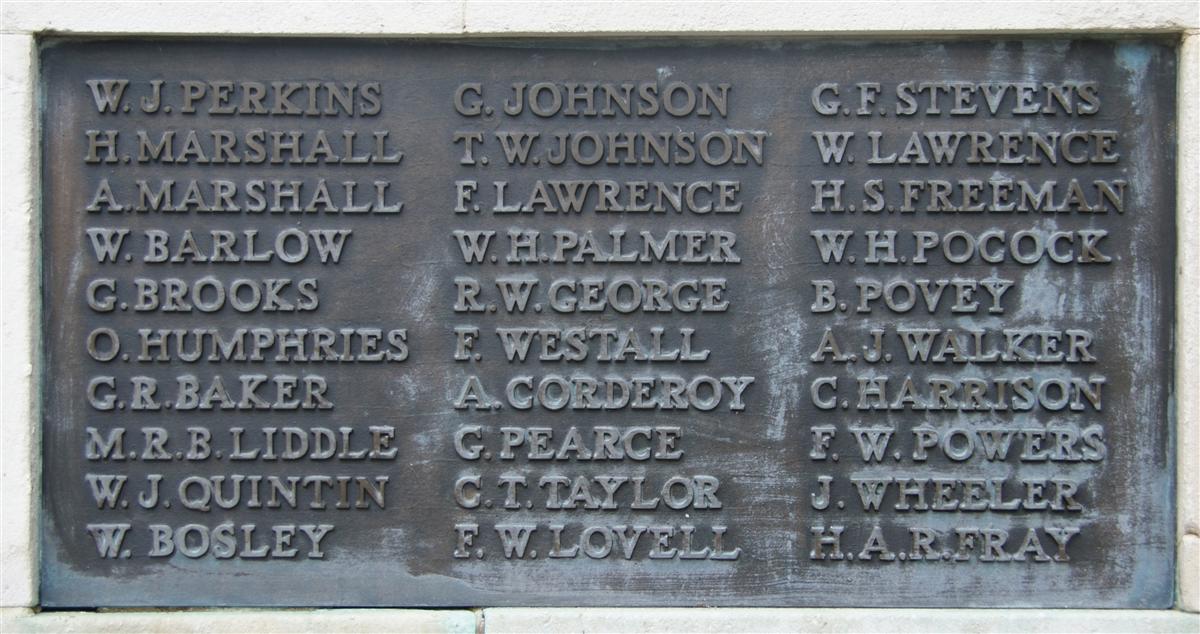
Harold's name on Newbury War Memorial (upper right) |
The Commonwealth War Graves Commission (CWGC) was created (as the Imperial War Graves Commission) to care for and maintain the graves of soldiers from the British Empire who died in the Great War or whose death resulted from their service in that war. They are well known for their immaculately kept cemeteries along the Western Front and, indeed, all over the world. It is less well known that they also care for thousands of individual graves in cemeteries and churchyards all over the United Kingdom. Harold’s grave in Newtown Road Cemetery is one of these graves, but it was not marked by a CWGC headstone, because the family had their own stone erected. In cases such as this the CWGC inspect the grave from time to time and assess the legibility of the family stone. If the stone becomes unreadable the CWGC then add a marker of their own to ensure that the serviceman or woman commemorated continues to have an identifiable final resting place.
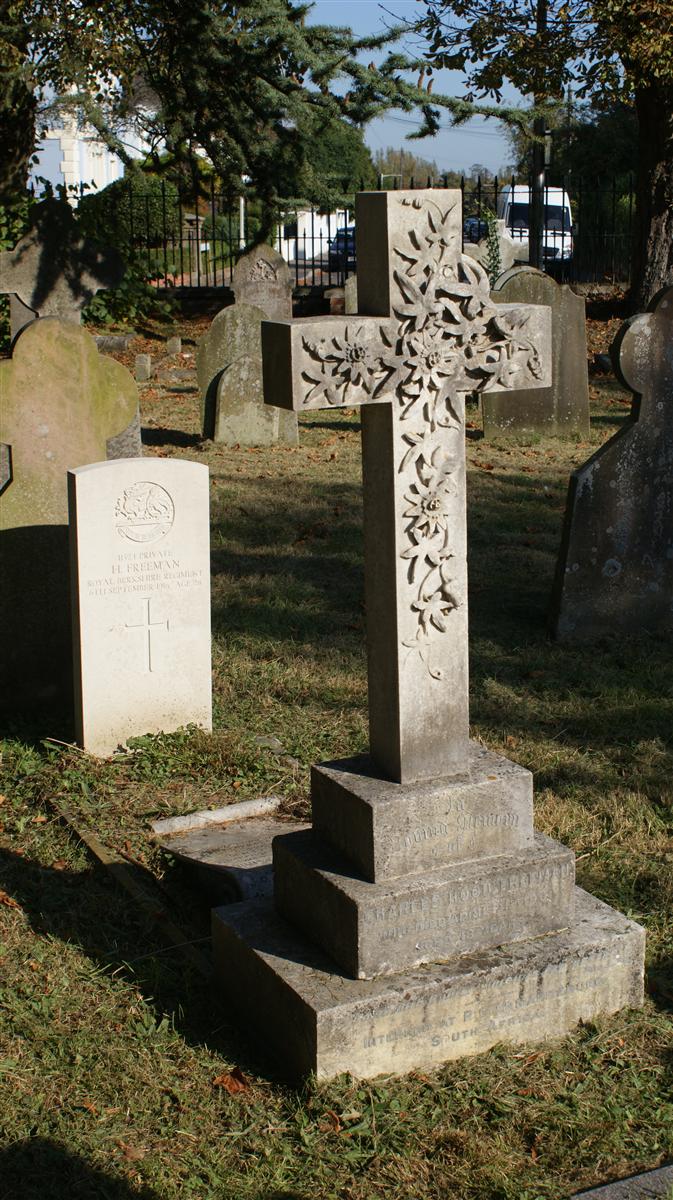
Harold's CWCG headstone on Algernon Freeman's grave (Oct 2011). |
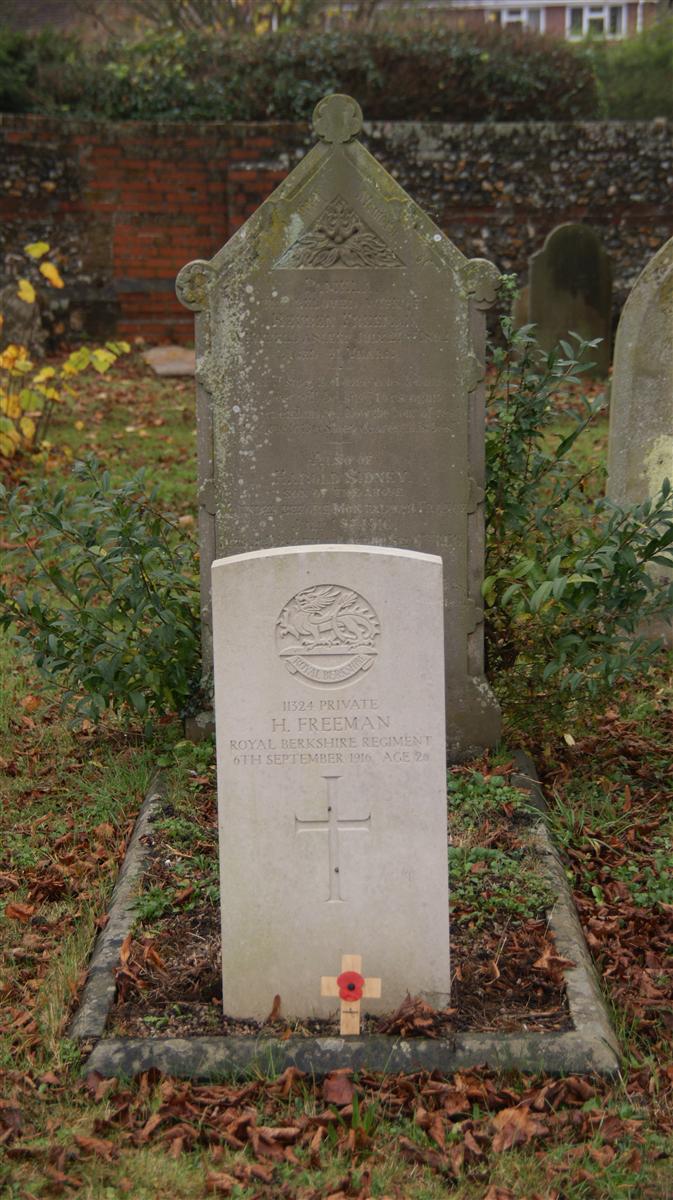
Harold's headstone on the right grave. (Nov 2011). |
In 2001 the CWGC determined that Harold’s grave required such measures (though the inscription is still legible in 2014) and ordered a standard pattern CWGC headstone from their office in Leamington Spa. This was duly delivered and erected in the cemetery – but on the wrong grave! Instead of Harold’s grave the stone was placed on Private Algernon Freeman’s grave. As the paperwork defined the grave position as ‘south of chapel’ – which covers about 75% of the cemetery it is not surprising that this mistake occurred, Algernon’s grave is quite close to the south of the chapel - though the headstone remains clearly legible and one might expect those adding the new stone to be a little suspicious.
When the Friends of Newtown Cemetery Group was formed in 2009 one of their activities was to research the lives of those buried in the cemetery. The various war graves were an obvious point of interest and it was not long before the error with Harold’s headstone was spotted. The CWGC were informed and in 2011 the headstone found its way to the correct grave.

